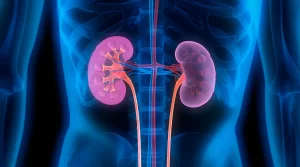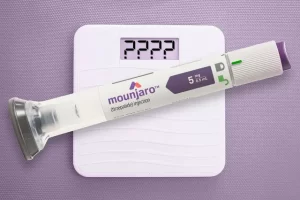Writing a Mounjaro Prescription Dosage for Type 2 Diabetes
HOME | DIABETES EDUCATION | HOW TO WRITE MOUNJARO PRESCRIPTION DOSAGE FOR TYPE 2 DIABETES
Prescribing Mounjaro (Tirzepatide) for obesity and type 2 diabetes requires an evaluation of the patient’s medical history and current health status.
The process involves critical assessments, dosage determination, side effect monitoring, and managing insurance complexities.
Personalized care and consistent patient management are essential when implementing this treatment.
Key Takeaways
- Begin with assessing patient eligibility, focusing on type 2 diabetes diagnosis and medical history.
- Follow the recommended starting dose of 2.5 mg weekly, adjusting based on patient response.
- Monitor for side effects and adjust dosing for safety and efficacy.
- Use the self-service portal for streamlined prescription writing and ensure accurate dosing instructions.
Assessing Patient Eligibility for Mounjaro Dose
To determine the correct Mounjaro dose, review the patient’s type 2 diabetes diagnosis, medical history, and age. Avoid prescribing to individuals with type 1 diabetes or under 18 years. Pay close attention to history of pancreatitis or thyroid issues to prevent complications.
Consider the patient’s past experiences with type 2 diabetes treatments and weight loss strategies. This helps customize the Mounjaro regimen, increasing chances of success. Discuss potential Mounjaro risks and benefits, ensuring the patient understands the implications, including possible side effects and weight loss expectations.
This transparent approach builds trust and promotes patient adherence to treatment.
Understanding Mounjaro Dosage
The initial dosage of Mounjaro is 2.5 mg once a week for the first four weeks. After this, the dosage typically increases to 5 mg once a week.
This strategy is essential to maximize Mounjaro’s effectiveness and reduce potential side effects. Healthcare providers must closely monitor patients and adjust doses as needed to ensure safety and efficacy.
Side Effects and Precautions of Taking Mounjaro (Tirzepatide)
Mounjaro (tirzepatide) is used to treat type 2 diabetes and obesity. However, side effects can occur, including nausea, diarrhea, stomach discomfort, pancreatitis, and allergic reactions.
| Side Effects | Description | Precautions |
|---|---|---|
| Nausea | Common, especially in early stages. | Start with a low dose, increase gradually. |
| Diarrhea | Can accompany nausea. | Ensure hydration, monitor electrolyte balance. |
| Stomach Discomfort | Abdominal pain or discomfort. | Consume smaller, frequent meals. |
| Severe Side Effects | Pancreatitis, allergic reactions. | Seek medical attention immediately. |
Immediate medical help is necessary for severe effects like pancreatitis, allergic reactions, vision changes, and gallbladder issues. Patients with medullary thyroid carcinoma or MEN 2 should not take Mounjaro due to thyroid tumor risk. Tailoring Mounjaro prescriptions to individual needs optimizes safety and treatment effectiveness.
Insurance and Savings Programs
Insurance coverage and savings programs greatly influence the financial aspect of utilizing Mounjaro for weight loss or type 2 diabetes management. The extent of Mounjaro coverage depends on the specifics of individual insurance plans, requiring patients to consult their providers to understand the eligibility criteria.
The Mounjaro Savings Card is a crucial tool for eligible patients, potentially reducing out-of-pocket expenses by up to $573. Consultation with healthcare providers further aids in navigating insurance approval and understanding the cost of Mounjaro treatment.
Comprehending insurance coverage, the Mounjaro Savings Card’s eligibility criteria, and consulting healthcare providers about prescription costs are integral to managing Mounjaro’s financial aspects.
Utilizing the Self-Service Portal to Prescribe a Dose of Mounjaro
The self-service portal is a practical tool for healthcare providers to prescribe Mounjaro. It provides a streamlined process to input patient data, follow dosage guidelines, and explore prescribing options.
The portal allows the selection of a Mounjaro dose from 2.5 to 15 mg, customized to the patient’s needs and conditions. This ensures accurate dosing, reducing the risk of side effects like nausea and diarrhea, and maximizing the medication’s therapeutic benefits.
The portal’s feature of sending e-prescriptions directly boosts convenience, eliminating treatment initiation delays. Using the portal simplifies Mounjaro prescription, emphasizing patient-centered care by ensuring accurate and timely prescriptions in line with current clinical guidelines.
Setting Patient Expectations; Using Mounjaro
Informing patients about Mounjaro’s weekly injection schedule is crucial for treatment adherence and realistic expectation setting. It’s used for type 2 diabetes and weight management. Discuss not only Mounjaro’s benefits but also its administration method and missed dose protocol. This ensures patients understand the drug’s effects and use.
Dosing and Administration: Mounjaro is a weekly injection. Teach patients correct injection techniques and the necessity of dose escalation to reduce side effects.
Managing Missed Doses: Explain the missed dose protocol. Emphasize taking the missed dose promptly if within a specific timeframe from the scheduled dose.
Side Effects Management: Talk about common side effects like nausea and their management, which could involve dietary adjustments or injection timing modification.
Mounjaro Pen Usage Instructions
For safe and effective use of the Mounjaro pen in weight management or treating type 2 diabetes, patients need proper instruction. Emphasize the importance of understanding the administration process. The injection sites include the stomach, thighs, or upper arms’ back to ensure effective absorption and limit discomfort. Site rotation is recommended to prevent tissue irritation.
The administration process is a 4-step procedure: injection site selection, Mounjaro pen preparation, injection performance, and proper disposal. Stress the sequence’s importance to boost patient confidence and treatment adherence.
Storage and Disposal Guidelines
Store Mounjaro pens in a fridge, specifically between 36°F to 46°F, thwarting proximity to the freezer to avoid freezing. Retain pens in original packaging to shield them from light and for easy identification. Handle pens cautiously due to their glass components and check for freezing before use.
Discard using an FDA-cleared sharps container, ensuring safe disposal of needles, syringes, and sharp objects, thereby reducing needle-stick injury risks. Adhere to local community disposal guidelines for sharps, demonstrating environmental responsibility and commitment to community health.
EHR System Integration When Prescribing Mounjaro Injection
Epic SmartSets and Cerner PowerPlans integration with EHR systems allows accurate Mounjaro injection prescriptions, ensuring correct dosage and patient monitoring. The integration provides immediate access to critical dosing information and Mounjaro-specific safety alerts, facilitating a streamlined workflow for healthcare providers.
A health system may choose to optimize existing EHR order sets with Mounjaro. Order sets consolidate notes,
referrals, imaging studies, lab orders and bundles, medications, patient education, coding and billing information,
and other orderable items used to manage a condition or problem. Order sets can improve the user experience and
help reduce practice variation. These instructions detail specifically how to add the induction and maintenance
dosing of Mounjaro to existing order sets.
The recommended starting dose for adult patients taking Mounjaro is 2.5 mg injected subcutaneously once weekly
for 4 weeks. Titrate to 5 mg Mounjaro after 4 weeks. Additional dose escalation will be at the physician’s discretion.
The following instructions outline the optimization process of order sets to reflect this recommended dosing.
Treatment selection is always a decision made by the health care provider, and order sets may be overridden to
reflect this. An EHR newsletter or other communication medium may be considered to notify end users of the
availability and contents of the updated order sets.
Safety alerts about potential thyroid tumor risks associated with Mounjaro are incorporated into the EHR system, enhancing patient safety. This enables physicians to counsel patients about their treatment proactively, including the importance of monitoring for thyroid issue symptoms.
EHR integration simplifies patient education about thyroid C-cell tumor risks, ensuring adequate monitoring for those undergoing weight management treatment with Mounjaro. Access to patient data like serum calcitonin levels within the EHR system enhances ongoing patient management, highlighting the importance of EHR integration in Mounjaro injection prescriptions.
Monitoring and Adjusting Treatment
Post-EHR integration, the focus is on the constant tracking and modification of Mounjaro treatment. With the risk of thyroid tumors linked to Mounjaro use, vigilant patient monitoring is key. This process should be individualized and data-driven.
Key elements of Mounjaro therapy monitoring and adjustment include:
- Thyroid Tumor Symptom Monitoring: Actively searching for thyroid tumor signs is crucial due to the known risk with Mounjaro.
- Serum Calcitonin Levels Evaluation: Regular assessment of serum calcitonin levels aids in early detection of potential thyroid issues.
- Treatment Adaptation to Patient Response: It’s vital to modify dosage or treatment approach for patients showing suspected thyroid problems or adverse reactions.
These steps enhance the safety and efficiency of Mounjaro therapy while keeping patients abreast with their treatment and latest safety information.
Managing Adverse Side Effects of Mounjaro
To manage Mounjaro’s side effects like nausea, diarrhea, and stomach discomfort, strategies include:
- Eating small meals
- Drinking ginger tea
- Staying hydrated
- Making dietary adjustments
- Using over-the-counter antacids
Monitoring fluid intake and output is crucial for kidney problems. Contact a healthcare provider if:
- Vomiting persists
- Dehydration occurs
- Diarrhea lasts more than 2 days
- Severe stomach pain persists
- Changes in urination or swelling are noted
These strategies ensure safe and effective Mounjaro treatment for type 2 diabetes.
Renewing Mounjaro Prescriptions; Saving on Mounjaro
Maintaining regular Mounjaro treatment for weight loss or diabetes can be achieved through automatic prescription refills. This method not only ensures a steady supply but also employs ways to make the treatment affordable.
To manage Mounjaro medication refills easily, consider:
- Improvement Programs and Discount Cards: These can significantly lower the cost of Mounjaro prescriptions.
- Mail-Order Services: Offered by many pharmacies, they provide home delivery convenience and potential savings on long-term prescriptions.
- Support Programs and Online Platforms: These can offer Mounjaro at lower rates. Consider generic alternatives, which could be cost-effective options.
Utilizing support programs can further relieve financial burdens. Staying informed and utilizing resources helps ensure consistent and affordable treatment with Mounjaro, leading to improved health outcomes.
Frequently Asked Questions
How Do You Get Approved for Mounjaro?
To get approved for Mounjaro, you need to meet specific medical criteria, including conditions like type 2 diabetes or significant weight-related health issues. This process should be conducted under the supervision of a healthcare professional.
What Diagnosis Will Cover Mounjaro?
E11.9 is the diagnosis code for Mounjaro, relevant to type 2 diabetes mellitus without complications. Obesity or overweight conditions may also be covered, subject to individual insurance policy terms and previous medication trials.
How Many Doses Are in a Mounjaro Pen?
A Mounjaro pen holds either 4 or 2 doses, depending on the prescribed strength for weight loss or diabetes management.
How Do I Get Mounjaro When Insurance Denies?
To secure Mounjaro’s post-insurance denial, submit an appeal with clinical justification, cooperate with healthcare professionals, explore patient aid programs, involve patient advocacy groups, and liaise directly with the insurance corporation.



